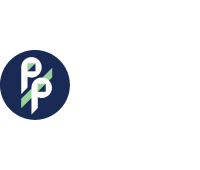When we talk about Agile, we usually mean the means that help us to be faster and maximize the value without delay. That's where we use iterations, frameworks, practices, etc.
Here Agile is more like a verb, while agile with a small "a" is an adjective.
Agility or agile is a capability. A person, a team, or an organization can be agile if they can proactively detect and respond to change. Agility means anticipating what might happen, managing the unexpected, and adapting to new circumstances.
This differentiation can help companies make the right decision and not just say, "we have to be agile, so let's use Scrum."
Companies might strive for agility without using Agile frameworks. But, in practice, it is hard to jump right at the mindset and capability level if you have not created a practical basis for that. That's why we first start with frameworks, processes, and practices to create the habit.
That's where the difficulty in understanding “why Agile” comes from.
At the beginning of my career, I found myself in the same trap, so I changed my approach to guiding the teams to understand true agility. I had to make it practical to link it to their daily lives.
Here are 12 steps to how I do it:
1. When explaining Agile and Scrum, use real-life metaphors like organizing the kitchen mess with strict responsibilities, budgets, meal plans, grocery lists, and your preferred food.
2. Do not say because X company does it. They will compare both companies mentally, understand the difference, and drop the idea immediately.
3. Focus on the topics relevant to the team's daily work like roles and responsibilities, goals and metrics, product vision, team mission statement, values and norms, communication, and improvement ways to talk about stuff that contain all their pain points.
4. Use the WHY question: why do we do Scrum? Why do we do dailys? Understanding this will reveal the things to be changed or improved.
5. Teach them to listen to different perspectives and be able to adapt to chosen directions.
6. Always ask them for their solutions. Engage them. These topics are not new to them, so if they have enough time and desire to address those, they will come up with some exciting suggestions to work on.
7. They have to have a plan of action consisting of small steps. So I always ask for improvement actions after each session.
8. Put stress on their effective communication. If they learn how to do that, they will devise their best plan to realize their goals and create a healthy atmosphere.
9. Do not pressure them with the processes and frameworks they use. I always say high-performing teams do more with less, i.e., using just enough processes to create value for their customers.
10. Please do not say we have to be fast. Instead, say how we can maximize the value with no delay.
11. You can add small teaching portions and guidance on how Agile teams do it in each session.
12. As a result, you can easily show them what Agile is all about, which will stick into their brains as something not from the outer world but something they cope with daily.
Thus, they will understand that Agile is not about processes or lack of processes and battle around specific events or ceremonies but will be more focused on the topics that will make them related, focused, result-oriented, and ethical.
The awareness, resilience, and adaptation will be developed during consistent work and experimentation/validation.
Hope you found it helpful. 🙂
===
Whenever you're ready, there are 3 other ways I can help you:
1. Follow me on Linkedin to get daily tips on #agile, #team coaching, #scrum master growth, #agile leadership, #agilecoaching #culture
2. Work with me 1:1 to grow in your Agile leader role or help your team and company grow.

